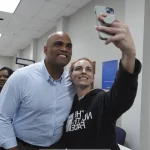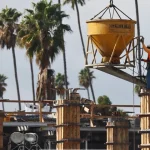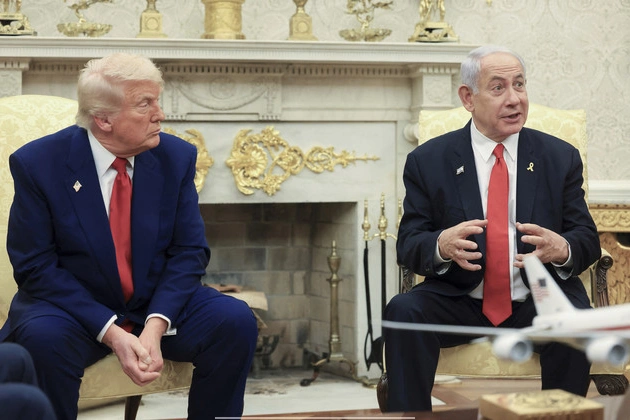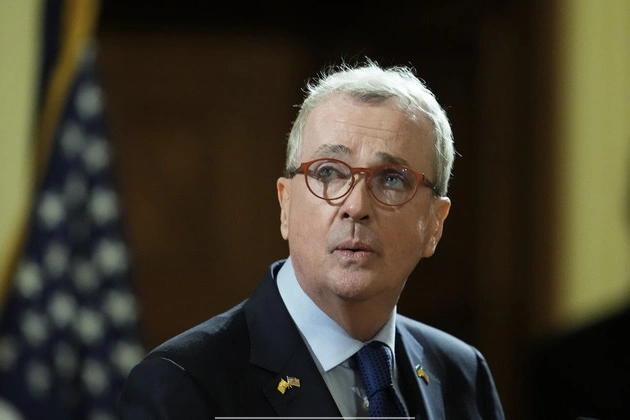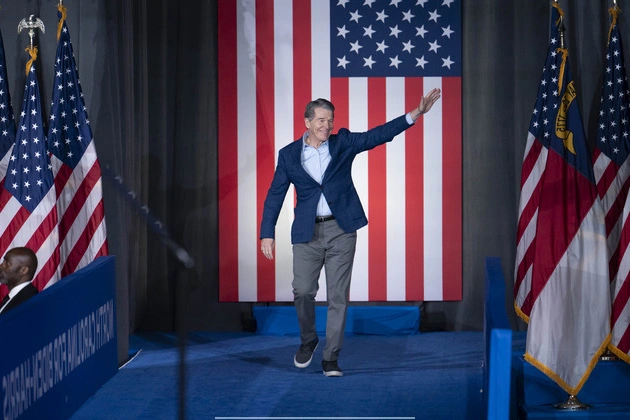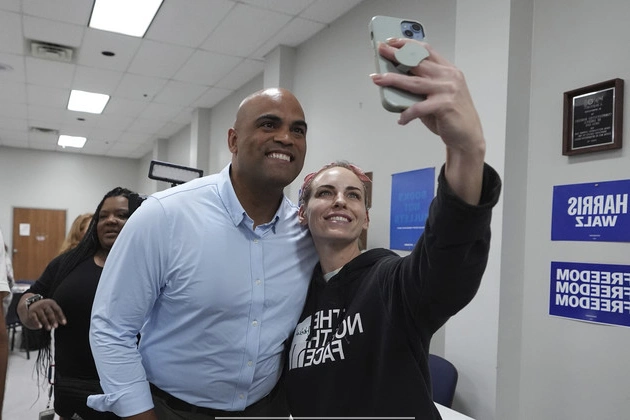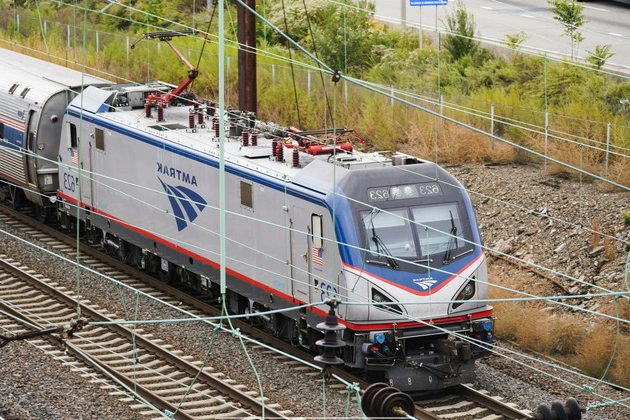
BENEATH THE EAST RIVER, New York — Twelve years after Hurricane Sandy’s brackish floodwaters poured into some of the Northeast’s busiest rail tunnels, the damage is still apparent from pooling water and crumbling casing.
The Political Landscape and Amtrak
Political leaders who mattered most — from former President Joe Biden to the region’s governors — all backed a $1.6 billion repair of the Amtrak tunnels connecting Manhattan and Long Island.
But now Donald Trump is president and New York is taking a more adversarial approach to Amtrak.
Even though repair work started last month on the Sandy-damaged tunnels beneath the East River, Democratic New York Gov. Kathy Hochul and members of her administration threw intense last-minute shade on the project. They suggested Amtrak cannot be trusted, doesn’t care about its customers and compared its officials to a used car salesman.
The Uncertain Future of Amtrak
The sharp elbows suggest a new peril for the national railroad following the “Amtrak Joe” Biden years, when the administration showered billions of dollars on the railroad and New York rail projects, including the separate $16 billion project to build new tunnels beneath the Hudson River connecting New Jersey and New York.
Amtrak’s leader recently stepped down in a peace offering to Trump and the railroad is facing major layoffs and renewed pressure to turn a profit. If Amtrak doesn’t have the confidence of Northeastern Democrats like Hochul, whose state is home to the flagship New York Penn Station and its busiest passenger routes, it’s not clear who Amtrak can count on.
“Am I confident?” Hochul said during a recent press conference. “I don’t know.”
Challenges and Controversies
Hochul’s recent criticism of the East River rehab, paired with open hostility toward Amtrak from officials at the Metropolitan Transportation Authority, are yet another sore spot between the Democratic governor and the Trump administration over transit — one among many. Trump is trying to kill New York’s signature congestion pricing program. Transportation Secretary Sean Duffy recently seized control of the high-profile overhaul of Penn Station and handed it to Amtrak, under the supervision of former MTA head Andy Byford.
But the tunnel clash adds animosity to what was once widely regarded as a slam dunk repair project by Amtrak to its own tunnels. Sandy flooded two of four East River train tunnels, leaving behind a salty residue that’s eating away at the concrete casing. Since then, Amtrak has been working on a plan to fix the century-old tubes by closing them one after another for two-and-a-half years of repair work.
The closures could prompt delays for Long Island commuters if something goes wrong in any of the other tunnels. Hochul worries those delays could shred public confidence in transit after the state is “finally getting our footing.”
“The last thing I want to do is have a setback that can go on for years,” Hochul said. “So I was very clear in my messaging to Amtrak: Don’t screw this up.”
The Battle Over Tunnel Repairs
As the tunnel repair project loomed, Hochul and the MTA asked Amtrak to rip up its closure plans and take a different approach known as “repair in place,” which would shift the work to nights and weekends and keep the tunnels open during peak commuting times. In doing so, she and her allies have used rhetoric that would have been hard to imagine when Biden was president.
“Amtrak’s track record for us is a little terrifying,” MTA CEO Janno Lieber said, citing unrelated problems with Amtrak’s system that caused massive headaches for New Jersey commuters last summer.
Lisa Daglian, the head of the Permanent Citizens Advisory Committee to the MTA, cited a history of Amtrak system problems to suggest that if something went wrong with the East River tunnels, the 2017 “summer of hell” transit crisis in New York City would look like a “warm spring day.”
Regional Concerns and Political Dynamics
In New Jersey, Gov. Phil Murphy and members of the state’s congressional delegation have expressed frustration with Amtrak, but for other reasons and in more muted terms. Murphy, a Democrat, stepped in to broker a peace between Amtrak and NJ Transit last summer after the two railroads got into a spat over who was to blame for massive delays for Garden State commuters. Now, every few months, Murphy gathers NJ Transit and Amtrak leaders in front of cameras to field reporters’ questions about their joint work.
Not so in New York.
New York’s criticism of Amtrak intensified shortly after Duffy announced in mid-April that it would be in charge of Penn Station, a move that sidelined the MTA and Lieber, who has his own particular vision for what should happen there.
Future Challenges and Collaborations
It’s hard to know if the tunnel flare up aimed at Amtrak is part of a tit-for-tat, but it’s a theory few people are discounting given that the MTA and Amtrak had been talking about the tunnel work for years.
“We were surprised by this sudden disavowment of a plan that we had worked together on for a long time,” said Laura Mason, Amtrak’s executive vice president for capital project delivery.
New York contends it has long harbored worries about Amtrak’s plan to close one tunnel for 13 months of repairs, reopen it and then close the other for 13 more months. The East River tunnels are used by Amtrak, the MTA’s Long Island Rail Road and NJ Transit, which sends trains to Queens so they can be ready to head back to New Jersey during rush hour.
NJ Transit has not raised a ruckus over the tunnel project. But LIRR, which is part of the MTA, is the biggest user of the tunnels. And its leader, Rob Free, is worried because it sends more than 450 trains and 125,000 customers through them each day.
In early May, Amtrak handed LIRR an easy anecdote to bash it with even before repairs began: Poor quality control meant one of the tunnels wasn’t ready to go after an overnight outage, inconveniencing tens of thousands of Long Island commuters. If another tunnel had been closed for repair when that happened, there would have been even more delays and cancellations.
Maintaining Confidence and Transparency
“The governor of New York seems to be more concerned about Amtrak customers than they do,” Free, the head of LIRR, said during a press conference in remarks that echoed Hochul’s own.
Mason of Amtrak responded that the critique “didn’t hurt because it wasn’t true,” but she was frustrated by Free “misrepresenting the collective effort that went into these plans.”
Mason said that while the MTA has had concerns, it has been part of the project for years — the MTA has helped get the money for the project, signed off on the design and participated in the procurement.
But there’s been a bipartisan group of New York members worried about Amtrak for a while, including everything from Amtrak’s service cuts to the full closure of the tunnels.
Conclusion
Former New York Gov. Andrew Cuomo’s ideas about how to run a railroad also loom over the dispute.
To avoid a shutdown of the L subway line in 2019, Cuomo’s administration instead shifted most of the work to nights and weekends. He was hailed as a sort of hero at the time and wanted to use that same repair-in-place approach on other projects, including Gateway. Now Hochul wants to use the idea for the East River tunnels.
Amtrak recently fought back against it by offering a rare media tour of one of the East River tunnels to show just how fragile the tunnels are and why it considers repair-in-place unworkable.
The tunnel repairs Amtrak is making should ensure people can escape in an emergency. It won’t stop all the dripping, but it’s expected to prevent puddles from shutting down service and will upgrade the tunnel’s interior and electrical work.
“What we’re designing is a tunnel that helps itself,” said Liam McQuat, Amtrak’s vice president of engineering services. “This has been 12 years in the making.”
The biggest impression Amtrak made was just how hard it would be to cram in work on nights and weekends: It seemed hard enough to get a gaggle of reporters in and out of the tunnel — no trains could travel in the tunnel that had to be blocked off and powered down for safety. The message Amtrak sent was that trying to get hundreds of workers and all their equipment in and out of the tunnel each night and have the tunnel reopened in time for the morning commute would be challenging and inefficient. It could also triple or quadruple the time it would take to make the repairs.
In a press conference the next day, Free dismissed Amtrak’s tour as the work of a car salesman.
“The salesman pulls the car up, you sit in the car, pulls at your heartstrings, pulls at your emotions,” Free said. “But at the end of the day, it’s about the details, it’s about what’s the bottom line.”




